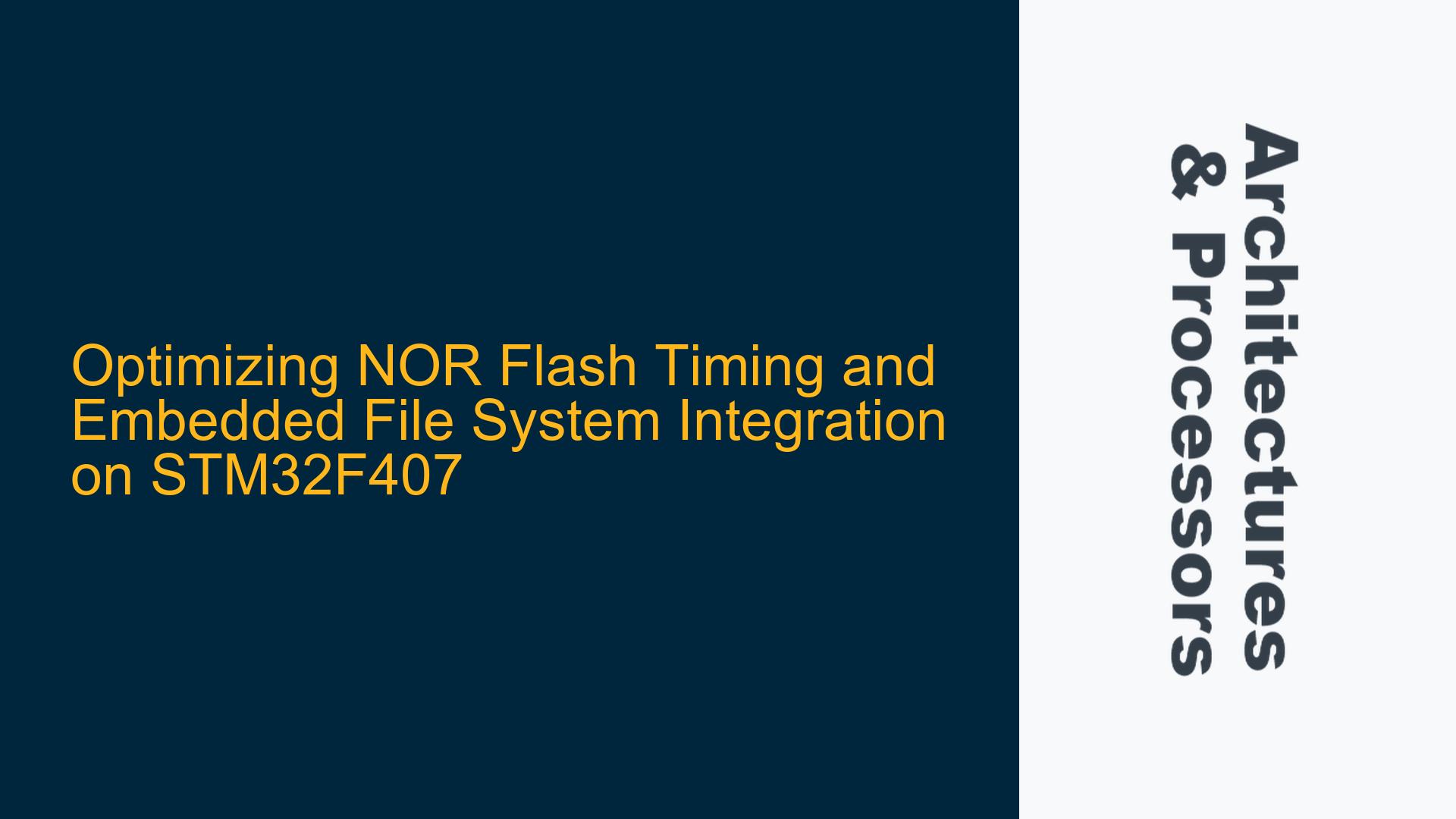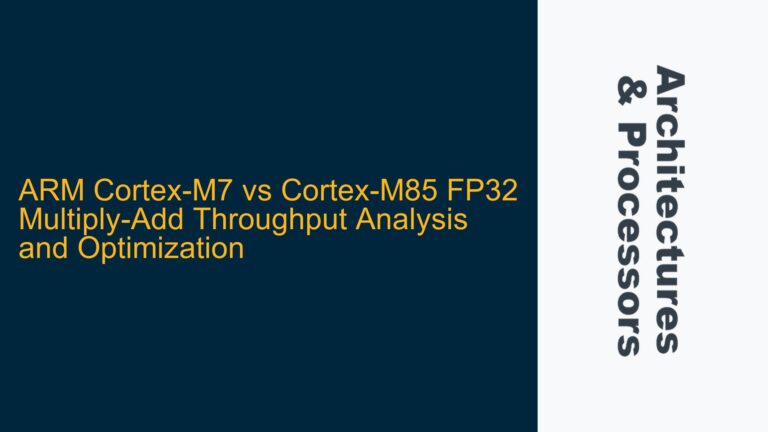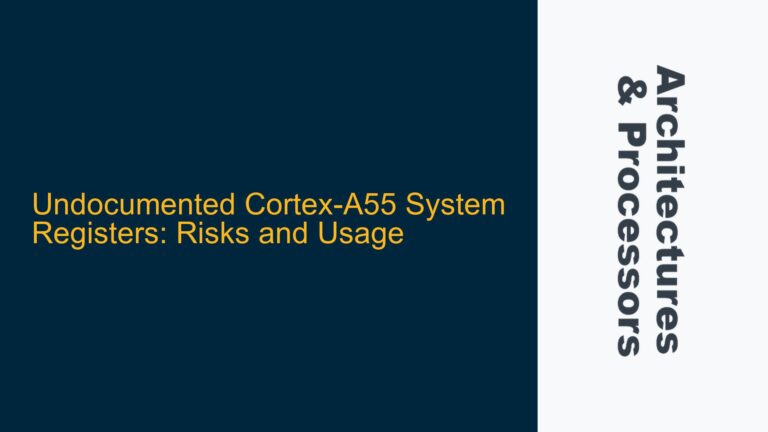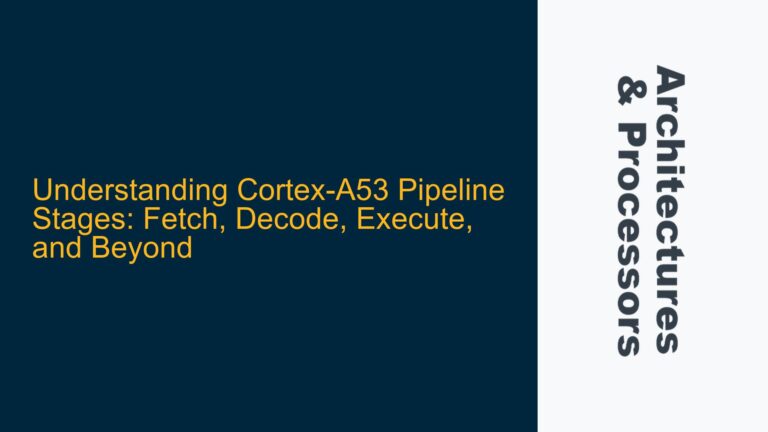NOR Flash Timing Parameter Challenges with STM32F407
Interfacing an external NOR flash memory, such as the Cypress S29GL064880TFV030, with an STM32F407 microcontroller involves precise configuration of timing parameters to ensure reliable communication. The STM32F407 microcontroller uses its Flexible Memory Controller (FMC) to interface with external memories, including NOR flash. The FMC supports multiple memory types and provides configurable timing parameters to accommodate various memory access requirements. However, determining the correct timing parameters for the NOR flash chip can be challenging due to the interplay between the microcontroller’s FMC settings and the NOR flash’s timing specifications.
The Cypress S29GL064880TFV030 NOR flash chip has specific timing requirements for read, write, and erase operations. These requirements are defined in terms of access time, pulse width, and hold time, which must be aligned with the FMC’s configuration. Misalignment between these parameters can lead to data corruption, failed write/erase operations, or even complete communication failure between the microcontroller and the NOR flash.
The STM32F407’s FMC allows configuration of several timing parameters, including address setup time, data setup time, and bus turnaround time. These parameters must be set based on the NOR flash’s datasheet specifications. For example, the NOR flash’s access time (tACC) dictates the minimum time required for valid data to be available after the address is stable. The FMC’s address setup time (ADDSET) and data setup time (DATAST) must be configured to meet or exceed this requirement.
Additionally, the NOR flash’s write cycle time (tWC) and erase cycle time (tEC) must be considered when configuring the FMC’s write and erase timing parameters. The FMC’s write setup time (WRITESET) and write hold time (WRITEHOLD) must be set to ensure that the NOR flash’s write cycle requirements are met. Similarly, the FMC’s erase timing parameters must be configured to accommodate the NOR flash’s erase cycle requirements.
Memory Controller Configuration and NOR Flash Timing Mismatch
One of the primary causes of timing-related issues when interfacing the STM32F407 with the Cypress S29GL064880TFV030 NOR flash is a mismatch between the FMC’s configuration and the NOR flash’s timing specifications. This mismatch can occur due to several factors, including incorrect interpretation of the NOR flash’s datasheet, improper calculation of timing parameters, or overlooking the impact of the microcontroller’s clock speed on timing calculations.
The STM32F407’s FMC operates based on the microcontroller’s system clock (SYSCLK). The timing parameters configured in the FMC are expressed in terms of HCLK cycles, where HCLK is the clock signal driving the AHB bus. If the system clock frequency is changed during runtime, the FMC’s timing parameters must be recalculated to maintain proper alignment with the NOR flash’s timing requirements. Failure to account for clock frequency changes can result in timing violations and communication failures.
Another common cause of timing mismatches is the misinterpretation of the NOR flash’s timing specifications. The Cypress S29GL064880TFV030 datasheet provides minimum and maximum values for various timing parameters, such as access time, pulse width, and hold time. These values must be carefully interpreted and translated into the corresponding FMC timing parameters. For example, the NOR flash’s access time (tACC) must be converted into the FMC’s address setup time (ADDSET) and data setup time (DATAST) based on the microcontroller’s clock frequency.
Additionally, the NOR flash’s timing specifications may include margins or guard bands to account for variations in operating conditions, such as temperature and voltage. These margins must be considered when calculating the FMC’s timing parameters to ensure reliable operation across the entire range of operating conditions. Ignoring these margins can lead to intermittent failures or reduced reliability.
Configuring FMC Timing Parameters and Implementing Embedded File System
To address the timing challenges and ensure reliable communication between the STM32F407 and the Cypress S29GL064880TFV030 NOR flash, the FMC’s timing parameters must be carefully configured based on the NOR flash’s timing specifications. The following steps outline the process for configuring the FMC and integrating an embedded file system (EFS) for storing binary files received from a TFTP client.
First, the NOR flash’s timing specifications must be extracted from its datasheet. Key parameters include access time (tACC), write cycle time (tWC), erase cycle time (tEC), and pulse width (tWP). These parameters must be converted into the corresponding FMC timing parameters based on the STM32F407’s system clock frequency. For example, the access time (tACC) can be converted into the FMC’s address setup time (ADDSET) and data setup time (DATAST) using the following formula:
ADDSET = (tACC – tHCLK) / tHCLK
where tHCLK is the period of the HCLK signal. Similar calculations must be performed for the write cycle time (tWC) and erase cycle time (tEC) to determine the FMC’s write setup time (WRITESET) and write hold time (WRITEHOLD).
Once the FMC’s timing parameters are calculated, they must be configured in the STM32F407’s FMC registers. This involves setting the appropriate values for the address setup time (ADDSET), data setup time (DATAST), write setup time (WRITESET), and write hold time (WRITEHOLD) in the FMC’s timing configuration registers. The FMC’s mode register must also be configured to select the appropriate memory type (NOR flash) and access mode (asynchronous or synchronous).
After configuring the FMC, the next step is to initialize the NOR flash and verify that it can be accessed correctly. This involves performing read, write, and erase operations to ensure that the timing parameters are correctly configured and that the NOR flash is functioning as expected. If any issues are encountered, the FMC’s timing parameters must be adjusted and the verification process repeated until reliable communication is achieved.
Once the NOR flash is successfully interfaced with the STM32F407, the embedded file system (EFS) can be implemented to manage the storage of binary files received from a TFTP client. The EFS provides a higher-level abstraction for managing files and directories on the NOR flash, allowing the application to focus on file operations rather than low-level memory access. The EFS must be configured to use the NOR flash as its storage medium, and the file system’s block size and sector size must be aligned with the NOR flash’s erase block size and page size.
The EFS implementation must also include error handling and recovery mechanisms to handle potential issues such as write failures, erase failures, and power loss. These mechanisms may include wear leveling, bad block management, and data redundancy to ensure data integrity and extend the lifespan of the NOR flash.
In conclusion, interfacing the STM32F407 with the Cypress S29GL064880TFV030 NOR flash requires careful configuration of the FMC’s timing parameters based on the NOR flash’s timing specifications. By following the steps outlined above, the timing challenges can be addressed, and a reliable embedded file system can be implemented to manage the storage of binary files received from a TFTP client. This approach ensures robust and efficient operation of the networked IAP/bootloader application.






